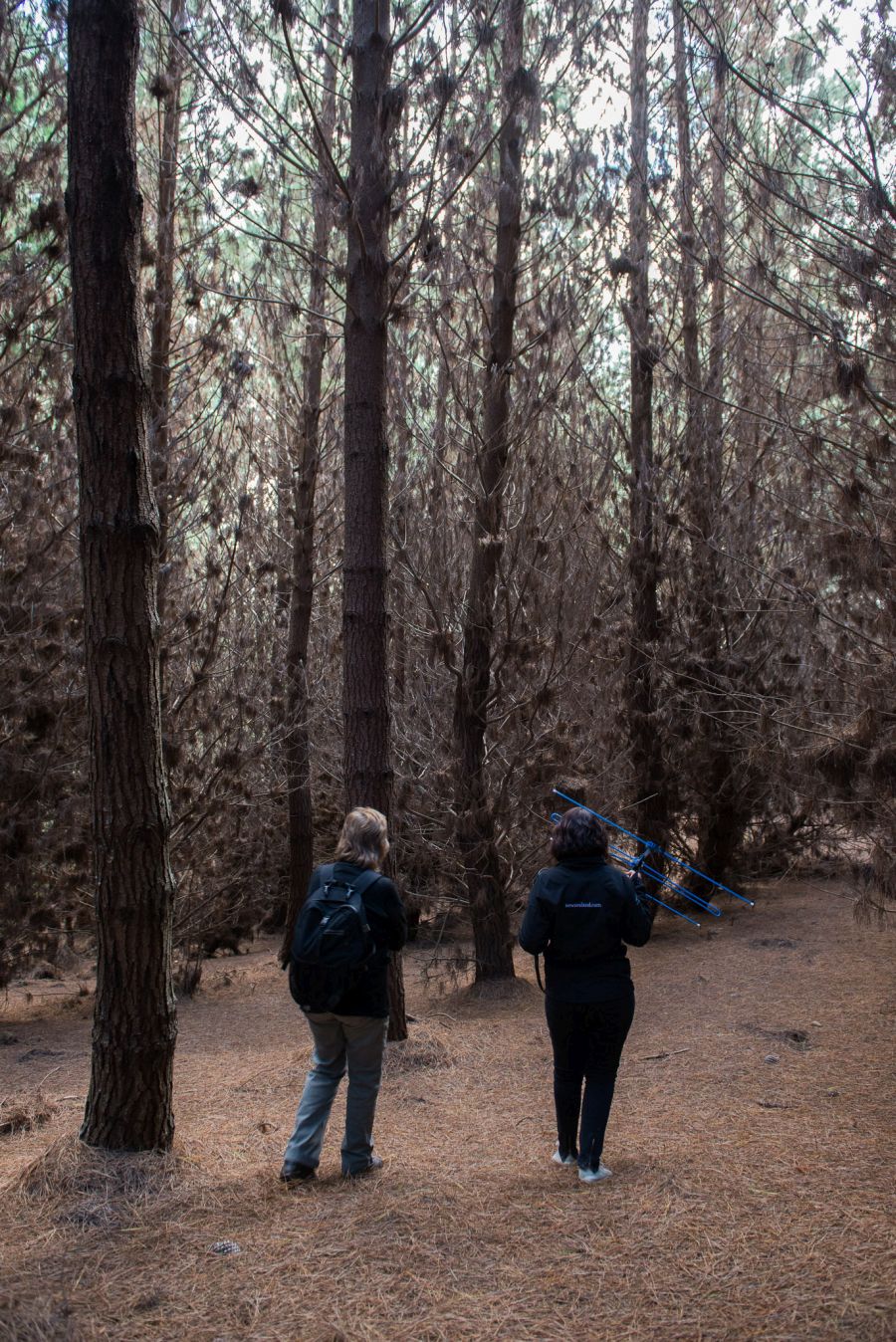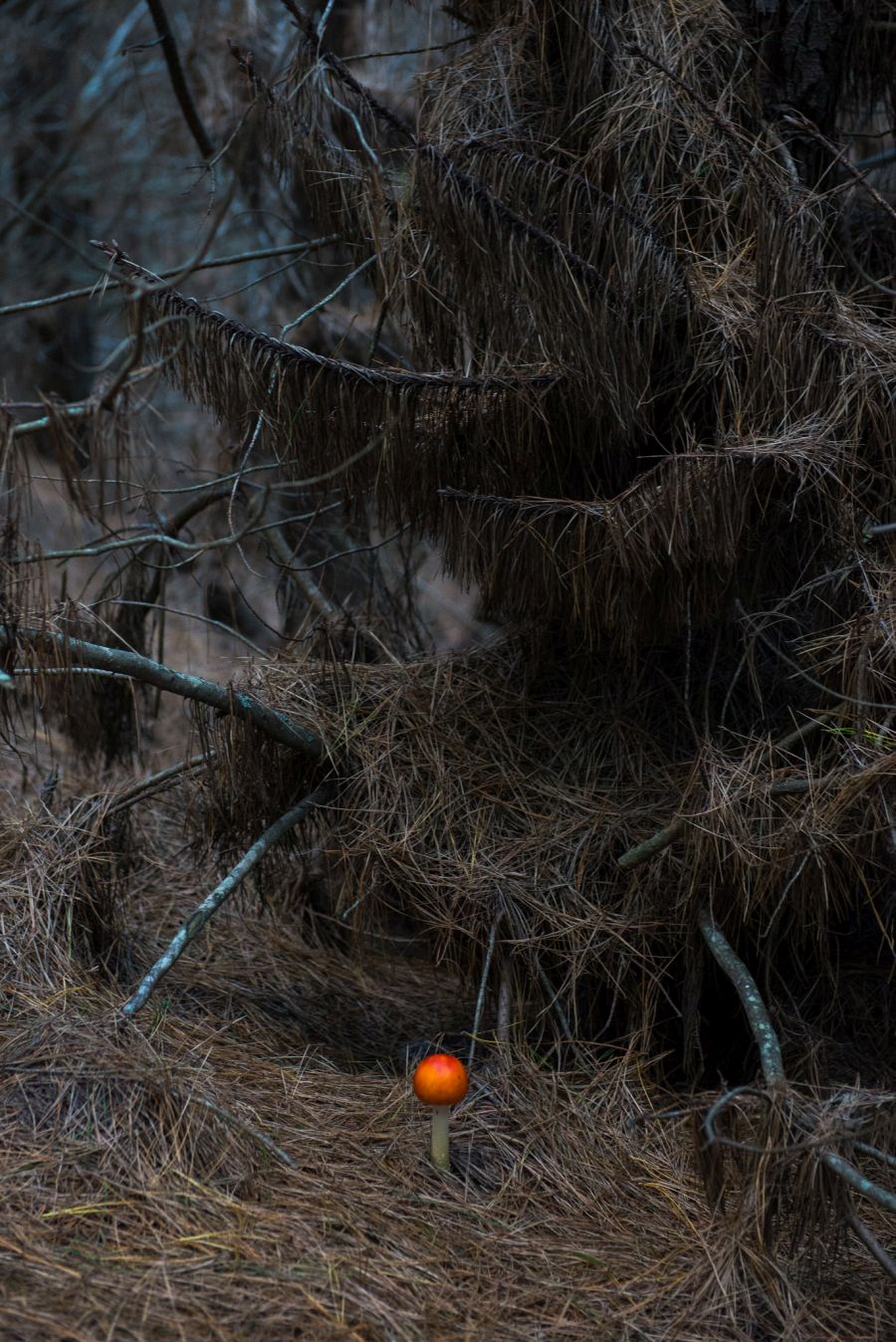The Farm at Cape Kidnappers, Hawke’s Bay, New Zealand – Part 2
Louise and I are in a pine forest, surrounded by tall trees, walking on a soft, moist forest floor covered in pine needles. We’re with our guide Sue who’s holding a radio antenna. I mustn’t fall behind, as if I get lost, there’s no way I’ll find my way out again. I mustn’t tumble into disaster, which may include dropping my camera, losing my lens cap or slipping, falling and injuring myself. I’ve never been the most sure-footed person, so I’m treading cautiously.
“This way,” Sue says, gesturing. We’re listening to the faint bip… bip… bip from the tracking equipment. It’s hard to tell if the bips are getting louder or ever so slightly fainter. We’re deep in the Cape Sanctuary tracking a kiwi bird who’s wearing the matching transmitter on his leg, somewhere here in the forest. Sue seems confident we’ll find him, but I’m not so sure. We’ve been scrambling through bushes, narrowly avoiding getting smacked in the face by tree branches and carefully climbing down embankments – quite a challenge when gripping onto a DSLR camera with 24-70mm zoom lens. As I always do when I find myself in natural surroundings, I’m on the look-out for animal poo – so I don’t step or sit on it. With forest all around and above me, it hasn’t taken long for me to lose all sense of direction. Can you tell I’m not the wilderness type?
 Sue leads the way with the radio tracking equipment.
Sue leads the way with the radio tracking equipment.The kiwi bird
- The kiwi is the national symbol of New Zealand. Around the world, New Zealanders are known affectionately as Kiwis.
- The kiwi is sole survivor of an ancient order of flightless birds endemic to New Zealand that included the moa. The largest species of kiwi stand approximately 45cm high, while the largest species of moa was a giant measuring up to 3.6 metres.
- The kiwi at the Cape Sanctuary are the North Island brown, the only species still living in the wild on the North Island.
- The birds at the sanctuary are collected as eggs, hatched in captivity, and released as chicks between 3-12 weeks of age.
- Kiwi survive well in the sanctuary as there are few mammalian predators here. In the wild, most kiwi are killed by predators such as stoats, dogs, ferrets, and cats within their first few weeks of life.
- Kiwi only begin to breed when they are 3 to 5 years old. Given the poor survival rate without human intervention, it’s not surprising that all five species of kiwi are endangered.
These shy, nocturnal birds are rarely seen by New Zealanders, and Louise and I are excited by the prospect of seeing one in the flesh. But will we find him?
Bip… bip… bip…
 Louise takes a turn holding the antenna. The signal is faint and difficult to follow, especially to our inexpert ears.
Louise takes a turn holding the antenna. The signal is faint and difficult to follow, especially to our inexpert ears.
Bip… bip… bip…

Bip… bip… bip…

The sunlight seems to have faded since we arrived, and I’m worried Sue will make us turn back. We’ve been following the bips for over 30 minutes. I’ve just about given up on finding the kiwi when Sue gives us a big grin and thumbs up.
 Another tight squeeze – but we’ve found him!
Another tight squeeze – but we’ve found him!Our little mate’s name is Tram Track, named after one of the tracks in the forest where he was found. I’ve referred to Tram Track as “he” but his gender is still to be confirmed by way of DNA testing. He was hatched on 29 October 2012.
 Tram Track’s vital statistics
Tram Track’s vital statisticsWe find him burrowed deep inside his nest, well camouflaged under a bush on the side of the hill. Sue reaches in with the confidence of someone who’s done this countless times before and pulls out a reluctant, protesting bird. He’s a fierce little creature, clearly unimpressed as Sue takes hold of his legs so he can’t scratch her with his clawed feet. He squirms and makes clicking sounds with his beak, which Sue informs us is something kiwis do to warn off unwanted visitors. Louise and I are quite amused, as it’s really not very intimidating.

He’s got whiskers on his face and is covered in bristly feathers that look like fur. He’s very soft to touch. I’ve seen a goose with a glint in its eye just before it chased me and I’ve now been glared at by a very angry kiwi bird.
 Tram Track the kiwi.
Tram Track the kiwi.Sue’s brought a container of freshly foraged hoo-hoo grubs for Tram Track, as a peace offering for disrupting his day. She sets them aside for the moment while she gets ready to examine him.
 Sue’s got hoo-hoo grubs for Tram Track
Sue’s got hoo-hoo grubs for Tram Track Getting Tram Track ready for measurements
Getting Tram Track ready for measurementsSue checks Tram Track’s transmitter is functioning correctly and not causing injury to his leg, then places him into a soft pillow case so he can be weighed. I’d thought he’d protest at being stuffed into a cotton bag but being enclosed seems to calm him temporarily. Once he’s brought back out, he’s back to his cantankerous clicking and squirming again.
 Sue places Tram Track into a soft pillow case to weigh him.
Sue places Tram Track into a soft pillow case to weigh him. Louise takes hold of Tram Track.
Louise takes hold of Tram Track.Tram Track’s utterly put out by our presence and the indignity of being examined – he now refuses to show a smidgen of interest in the hoo-hoo grubs. When Sue releases her grip on Tram Track, he streaks away into the bushes and disappears from sight. Sue leaves the grubs wriggling in a pile near his nest and assures us he’ll come out to eat them as soon as we’re gone.
 Tram Track’s not interested in the hoo-hoo grubs.
Tram Track’s not interested in the hoo-hoo grubs.I have no idea how Sue navigates back to the clearing where the four wheel drive is parked, but I’m thankful she knows where she’s going. If it was left to me to find my way out of the forest, I’d have become hopelessly lost.

About Cape Sanctuary
- The sanctuary was established in 2006 and stretches across two properties – Cape Kidnappers and Haupouri Stations, covering an area of 2,500 hectares.
- There are currently around 60 birds in the sanctuary. With natural population growth, it is hoped that by 2040, the Cape Sanctuary will be home to one of the largest kiwi populations in the whole of New Zealand.
- Cape Sanctuary is privately owned and funded almost entirely by the landowners but has the support of the Department of Conservation and dedicated volunteers.
- In 2007, the landowners built a 10.6km long pest-proof fence along with a predator control system inside the sanctuary, which has been in operation ever since.
- The Kiwi Discovery Walks at Cape Sanctuary are guided by kiwi experts and bird lovers Dr John McLennan and his wife Sue.
 Fungus in the forest
Fungus in the forestThe next morning, it was time to say a reluctant goodbye to Cape Kidnappers. With a few more guests having checked in, the breakfast buffet was available in addition to the a la carte menu.
 Breakfast buffet table
Breakfast buffet table The juice bar – orange, cranberry and feijoa.
The juice bar – orange, cranberry and feijoa. Breakfast buffet
Breakfast buffetLouise ordered the eggs Benedict, with poached free range eggs, whole grain mustard hollandaise and spinach. Salmon and ham options were available, but Louise preferred hers with neither.
 Eggs Benedict – with free range poached eggs, whole grain mustard hollandaise and spinach
Eggs Benedict – with free range poached eggs, whole grain mustard hollandaise and spinach Eggs Benedict: gooey egg yolk
Eggs Benedict: gooey egg yolkI said good-bye to Cape Kidnappers with bacon… and pancakes, banana and maple syrup. Louise and I were chuffed about our kiwi encounter from yesterday and now over breakfast, we talked about Tram Track and The Kiwi Discovery Walk – it really was an exhilarating, once-in-lifetime experience.
 Pouring the maple syrup: oh yeah!
Pouring the maple syrup: oh yeah!With my belly full of pancakes and bacon, it was time to rug up for a very chilly bicycle ride…
I travelled to Hawke’s Bay and stayed at The Farm at Cape Kidnappers as a guest of Tourism New Zealand.
Kiwi Discovery Walk, booked through The Farm at Cape Kidnappers
- NZ$550 per couple or $350 for single walkers. Part of the proceeds go to Cape Sanctuary to help support its continued efforts in conservation and wildlife protection.
- Maximum number of people per walk is 4.
- Make sure you wear suitable shoes and clothing for walking and climbing through bush, heavy vegetation and undergrowth. Your clothes may get wet and/or dirty.
The Farm at Cape Kidnappers
446 Clifton Road
Te Awanga
Hawke’s Bay, New Zealand
Telephone: +64 6 875 1900
Accommodation rates are quoted per person per night and include pre-dinner drinks with hors d’oeuvres, a la carte dinner, full breakfast, complimentary mini bar including domestic beers (excludes liquor and wine) and use of all lodge facilities (excluding golf and spa treatments).
See link below to my post – The Farm at Cape Kidnappers Part 1.
F.A.W.C! Summer Series 2013
The Food and Wine Classic, referred to as F.A.W.C! (pronounced ‘fawk’, rhymes with hawk), will see over 50 food and wine experiences held over 10 days in Hawke’s Bay. It kicks off with a launch party at Craggy Range Winery on 1 November and finishes with the Carnivore Carnival at the Hawke’s Bay Races on 10 November.
Find out more about F.A.W.C! – tickets on sale now.
My Hawke’s Bay blog series
The posts so far:
- Welcome to Napier
- Pacifica Restaurant, Napier
- Hawke’s Bay Farmers’ Market, Hastings
- Te Mata Peak, Craggy Range and Terrôir Restaurant, Havelock North
- The Farm at Cape Kidnappers, Part 1
- Elephant Hill, Te Awanga
- The Farm at Cape Kidnappers, Part 2 – this post
There are more stories to come from the trip.
